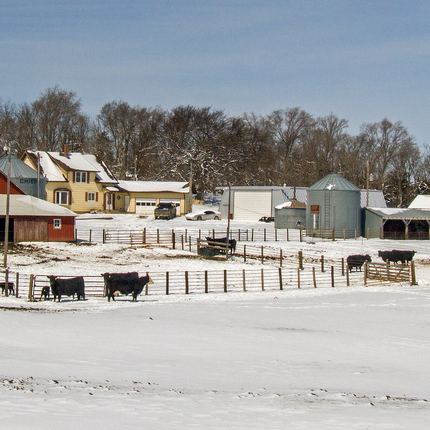By Traci Bruckner, former staff member
On Tuesday, February 9 the President released his budget, which includes $25.5 billion in discretionary funding for the US Department of Agriculture for the next fiscal year. The release of the budget serves as a guide to the Congressional Appropriations process, signaling where the administration would like to focus discretionary funding.
The president’s budget is non-binding, and appropriators do not have to follow suit. However, it can have an impact on the many programs we all care about – conservation, beginning and socially disadvantage farmers, and rural development in particular. We provide highlights here:
Conservation
The president’s budget, for the first time, does not make any cuts to two important conservation programs – the Conservation Stewardship Program and the Environmental Quality Incentives Program. These programs are critical for farmers and ranchers who face ever-increasing challenges from climate change, severe weather, and the relating impact to soil and water quality. We will work to ensure Congress follows suit so the Natural Resources Conservation Service is able to meet the high demand. In Nebraska they were only able to fund 30% of the eligible applicants in 2015.
Beginning and Socially Disadvantaged Farmers and Ranchers
The budget includes an increase for Direct Operating Loans by 16%, which will help more farmers who are looking to access these Farm Service Agency loans to help them meet their annual operating costs. In addition, the budget maintains the increased funding level from last year for direct farm ownership loans. These loans help beginning farmers and ranchers purchase land, with 75% of the funds targeted to beginning farmers and ranchers.
The Outreach and Technical Assistance to Socially Disadvantaged and Veteran Farmer and Rancher Program is provided $10 million in funding, which would put this program back to level funding. This program previously received $20 million in mandatory funding (meaning it was there every year and did not have to go through appropriations).
The 2014 Farm Bill cut the funding in half and added veterans to the program’s focus. This expanded the scope of the program while only providing half the normal level of funding. We hope Congress will follow suit and increase the funding level so that it can better meet demand.
Rural Development
We are excited to see the budget includes an increased request for the Rural Microentreprenuer Assistance Program (RMAP), which provides loan capital and technical assistance funding to organizations that in turn provide that assistance to rural small businesses.
For example, the Center for Rural Affairs provided a loan and technical assistance to Chandler Sandhill Honey in Anselmo, Nebraska. They have over 350 beehives and market local honey. More funding for RMAP means more rural entrepreneurs will have access not only to capitol but also business planning and technical assistance.
The budget also includes additional funding for the Rural Energy for America Program, which provides loans and grants for renewable energy systems and energy efficiency improvements.
Research
The Sustainable Agriculture Research and Education (SARE) program receives a welcome budget increase from $24.7 million to $30 million. This program supports farmer-driven research around sustainable agriculture and has only been able to fund 6% of eligible proposals due to lack of sufficient funding.
Next Steps?
Stay tuned as the budget and appropriations process moves forward. We will keep you updated as Congress begins to debate funding issues. Your calls and letters to members of the Appropriations Committee make a difference.





